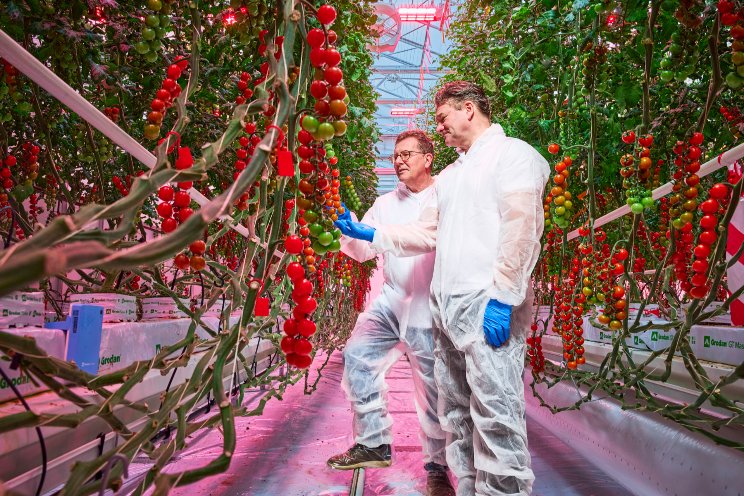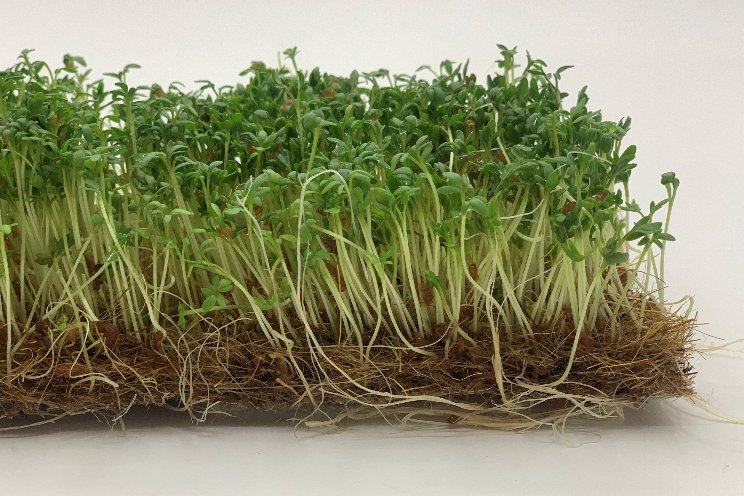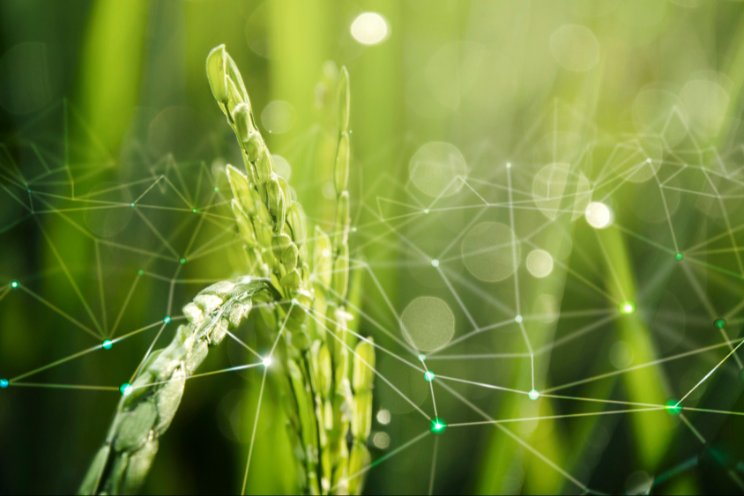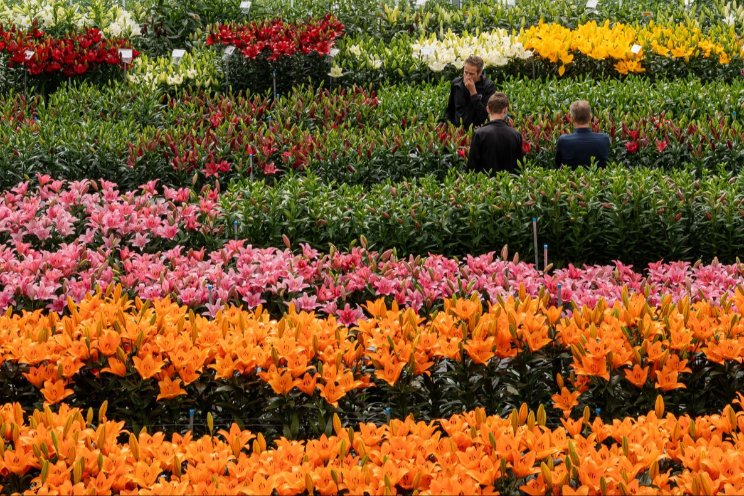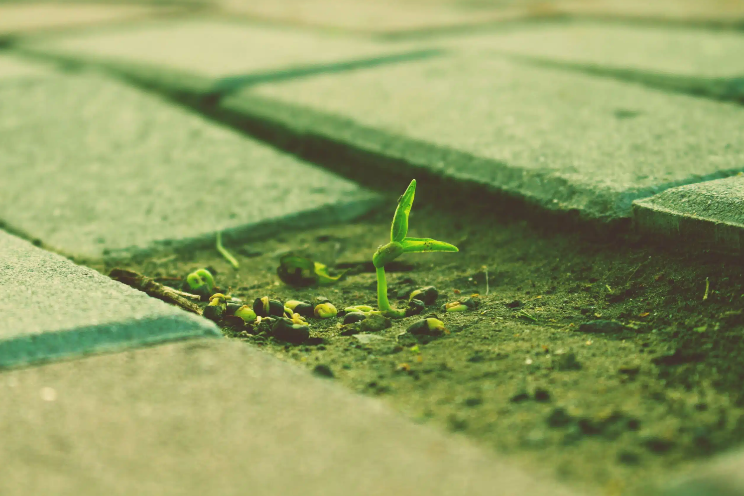The benefits of DL in lettuce production
Added on 03 May 2023
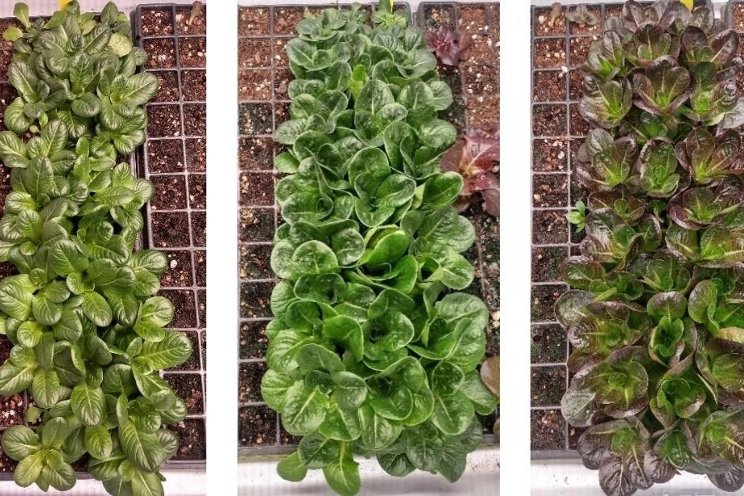
Variety-specific nuances such as color, flavor, and morphology of hydroponic lettuces can be enhanced by dynamic LED lighting. For example, dynamic lighting holds significant potential for producing red-leafed lettuce, which typically grows slower than its green counterparts due partly to anthocyanin accumulation. The red color is due to anthocyanin accumulation, with anthocyanin being an antioxidant and photoprotective pigment. Anthocyanin accumulation has been shown to reduce some crops’ photosynthetic rate, making them grow more slowly than equivalent green varieties. Given baby leaf mixes need to be harvested at the same stage and size, the difference in growth rate poses a challenge for growers. With dynamic lighting, a grower can apply a particular light recipe over green-leafed lettuce and another over red-leafed lettuce to ensure consistent growth between varieties and facilitated harvesting.
One proven strategy is the application of a growth-centered recipe over red-leafed varieties during the production stage, followed by high-blue treatment during the finishing stages (i.e., 3 to 5 days before harvest). With this strategy, a grower can apply light conditions to maximize photosynthesis during the production stage, reach a marketable weight sooner then promote anthocyanin accumulation during the finishing stage. Working in collaboration with Ohio grower, The Chef’s Garden, Sollum Technologies has used stage-specific lighting with positive results.
Sollum’s dynamic LED grow light solution outperforms the competition
Recent studies have also demonstrated the differences in spectral preferences of five lettuce cultivars, whose responses to different lighting strategies were recorded with respect to the number of leaves, relative chlorophyll content, fresh weight, and leaf shape index. Light green cultivars grew well under a balanced, white-light spectrum, whereas dark green and red cultivars performed well when the spectra were red- or blue-boosted. Furthermore, adjusting the spectrum improved leaf length and thickness, both important marketable traits. Working closely with The Chef’s Garden, the team demonstrated that modifying the spectra had an essential impact on the lettuce body and highlighted the antagonism between leaf surface area and thickness. By adjusting the spectra, the grower could produce thicker or thinner leaves as needed and tailor the plants’ leaf and stem lengths.
In a series of trials using Sollum® dynamic LED lighting and a competitor brand with a fixed spectrum, The Chef’s Garden studied the effects of lighting strategies on six lettuce varieties. While lettuce grown under Sollum’s dynamic LED lights outperformed the competitor-grown lettuce in nearly all instances, there was significant variation between all cultivars, red and green alike. For example, the green-leafed cultivar Dragoon had a biomass 38% higher than the same cultivar under fixed spectrum. Bambi, another green-leafed cultivar, had 23% more fresh weight than its competitor-grown counterpart.
To summarize, trial results overwhelmingly favored dynamic lighting from Sollum fixtures proving that dynamic lighting tailored to different cultivars can significantly improve plant biomass.

Dynamic lighting allows the grower to boost the output of far-red light towards the end of production to reach the right leaf length. The Chef’s Garden studies demonstrated the potential of far-red light when added five days before harvest, resulting in increased leaf surface area and fresh weight. Conversely, growers can just as easily remove far-red light during the final days of production to increase body and crunchiness. The possibilities are endless with dynamic lighting, and the grower holds all control rather than the outcomes of a single decision made upon purchase and installation. Sollum’s team and library of recipes provide support at every stage and every variety.
Dynamic lighting maintains crop health
From the plant level, growers can also adjust the light spectrum to achieve specific morphological impacts such as leaf extension, widening of the crown, leaf thickening or thinning, and as previously mentioned, leaf color. With baby leaf lettuce, growers often cite the need to produce a snackable product, highlighting the importance of crispness, leaf thickness, and a strong stem, allowing the consumer to snack on the product as easily between their fingers or fork.
Fluctuating greenhouse conditions such as shoulder seasons, the transition between spring to summer, and then summer to autumn can impact these traits. During these times, temperature management can be challenging as ambient light conditions and temperatures quickly change. Dynamic lighting allows the grower to respond to these changes and ensure that the light provided matches the crop needs, greenhouse temperature, and irrigation strategy. The grower can provide high light levels when ambient temperatures are high, then reduce light levels and modify the spectrum when temperatures drop.
Tipburn, which negatively impacts the appearance and shelf life, can be managed with dynamic lighting. A grower can include a sunrise and sunset to the light strategy, or general dimming up and down, at any time to match the light and temperature. Tipburn is directly linked to greenhouse airflow, thus temperature management. Our research has shown that HPS can induce tipburn once lights are off due to a rapid drop in temperature, and fixed LEDs can cause tip burn when turned on due to a mismatch between light and temperature.
Optimal light and predictable crop growth
Daily fluctuations in natural light levels are considerable during the shoulder months, thus October-November and March-April. During these months, greenhouses are subjected to some days of very bright lights and others with very little light. These fluctuations occur from one day to the next, but also within a given day, exposing a crop to inconsistent lighting patterns. With dynamic lighting, growers can apply a specific target light intensity to each lighting zone. Sollum’s SUN as a Service® (SUNaaS®) cloud platform can dim the lights up or down according to the ambient light conditions to ensure that the crop receives uniform light levels and has a more predictable growth pattern.
By combining real-time compensation with zoning, growers can apply variety-specific targets to ensure that each variety receives the optimal light intensity and daily light integral. For example, a zone can be created for a variety of light-sensitive lettuce and programmed to provide a lower light intensity throughout the day compared to other zones and even shut off completely when needed.
Due to its relatively short production cycle, there is little room for error in lighting greenhouse lettuce crops. With dynamic lighting, growers can ensure that each lettuce variety receives the optimal light intensity and spectrum, and Sollum’s lighting system is highly responsive to natural light levels.
Want to learn more about Sollum Technologies and its dynamic LED grow light solution? Visit SOLLUM's Clients and Science section or contact Senior Sales Director Nick Occhionero at +1 (514) 220 9284.
Click here for more information.
More news
